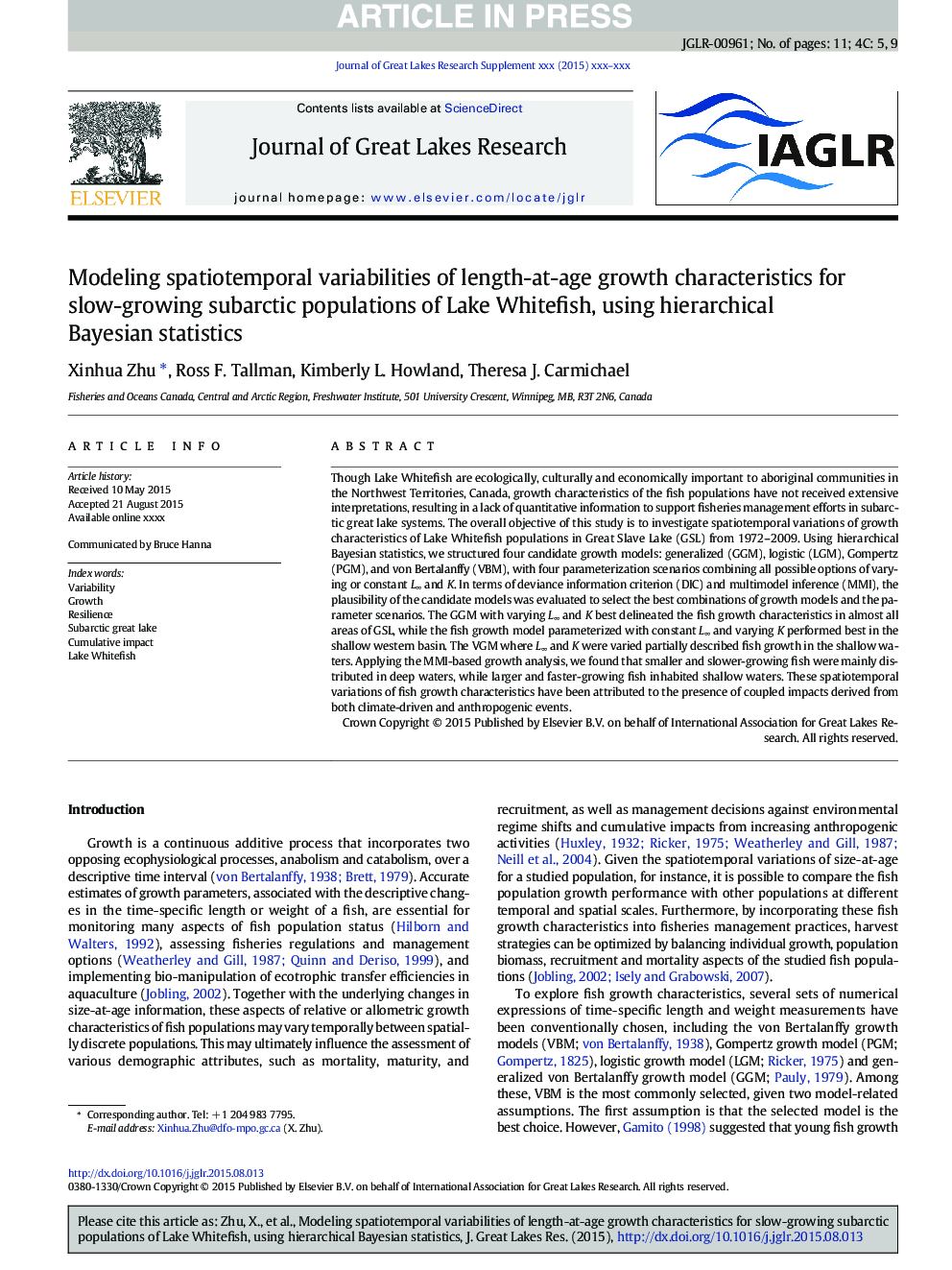| Article ID | Journal | Published Year | Pages | File Type |
|---|---|---|---|---|
| 6304733 | Journal of Great Lakes Research | 2016 | 11 Pages |
Abstract
Though Lake Whitefish are ecologically, culturally and economically important to aboriginal communities in the Northwest Territories, Canada, growth characteristics of the fish populations have not received extensive interpretations, resulting in a lack of quantitative information to support fisheries management efforts in subarctic great lake systems. The overall objective of this study is to investigate spatiotemporal variations of growth characteristics of Lake Whitefish populations in Great Slave Lake (GSL) from 1972-2009. Using hierarchical Bayesian statistics, we structured four candidate growth models: generalized (GGM), logistic (LGM), Gompertz (PGM), and von Bertalanffy (VBM), with four parameterization scenarios combining all possible options of varying or constant Lâ and K. In terms of deviance information criterion (DIC) and multimodel inference (MMI), the plausibility of the candidate models was evaluated to select the best combinations of growth models and the parameter scenarios. The GGM with varying Lâ and K best delineated the fish growth characteristics in almost all areas of GSL, while the fish growth model parameterized with constant Lâ and varying K performed best in the shallow western basin. The VGM where Lâ and K were varied partially described fish growth in the shallow waters. Applying the MMI-based growth analysis, we found that smaller and slower-growing fish were mainly distributed in deep waters, while larger and faster-growing fish inhabited shallow waters. These spatiotemporal variations of fish growth characteristics have been attributed to the presence of coupled impacts derived from both climate-driven and anthropogenic events.
Related Topics
Physical Sciences and Engineering
Earth and Planetary Sciences
Earth and Planetary Sciences (General)
Authors
Xinhua Zhu, Ross F. Tallman, Kimberly L. Howland, Theresa J. Carmichael,
